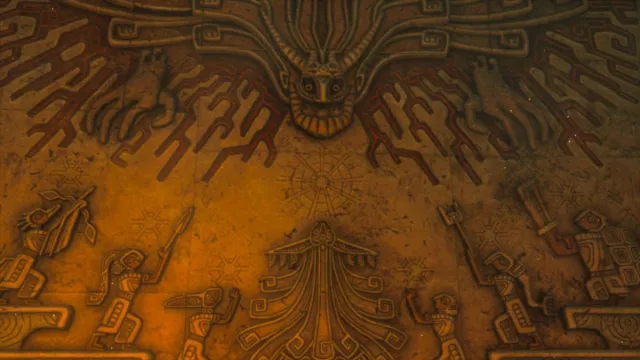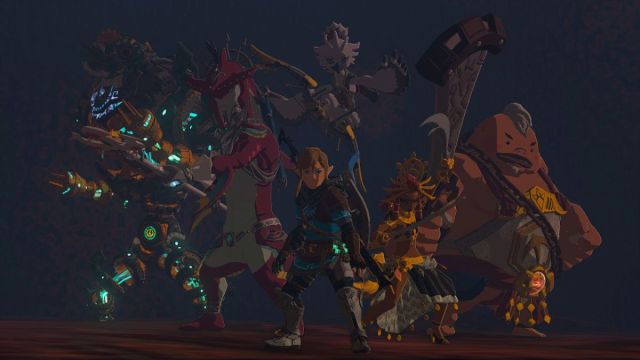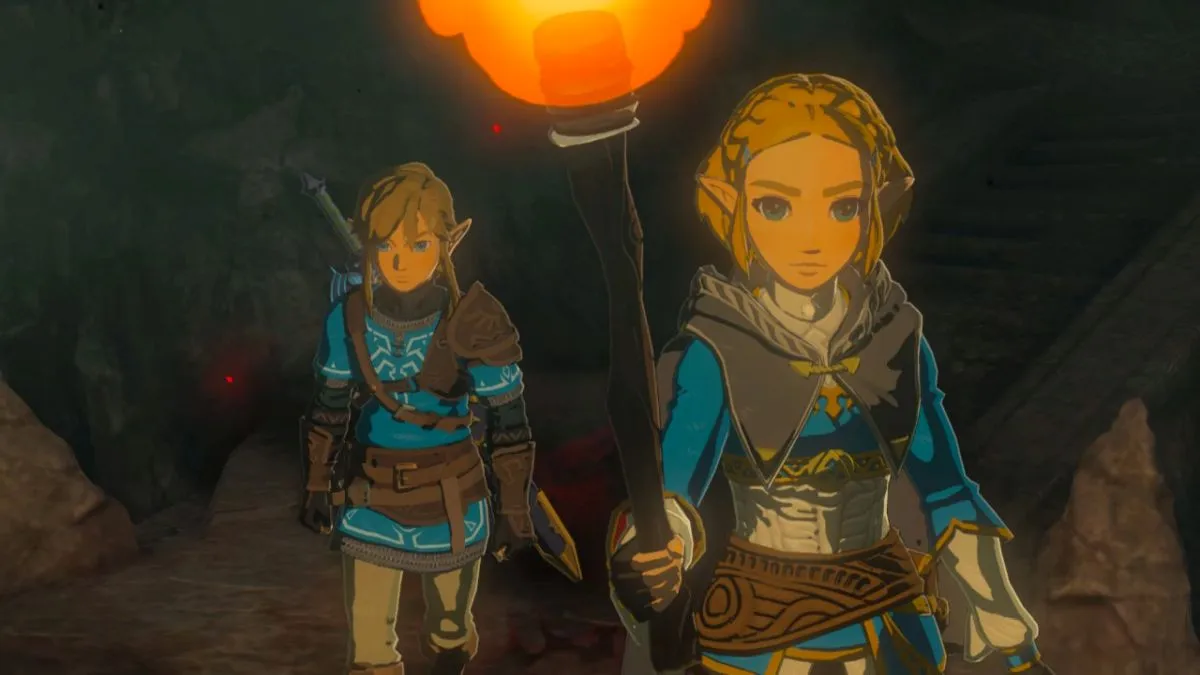End the tears, king
It’s been three weeks since the release of The Legend of Zelda: Tears of the Kingdom, an absolutely massive follow-up to Breath of the Wild. Though using the same land of Hyrule, I think it’s safe to say at this point that Tears massively expands on its foundation.
Despite its breadth, though, it seems like folks are starting to see the credits roll. I’ve noticed a few spoilers dancing around out in the wild, though some of the wilder secrets have had a good lid kept by the player base. This is one of, or possibly the most, story-driven take I’ve seen on Zelda. It’s not just the cutscenes, but the dialogue. The world. The way NPCs follow up on stories from the previous game, and carry them forward into the new one.
Back around Pokemon Scarlet and Violet, I wrote a little bit about the ending sequence of that game. It gave me a space to work through some of my thoughts about the surprisingly impressive end of that game, and what it said about the entire experience as a whole. And it also gave players who had also rolled credits a place to chat about their experience too.
So I figured, why not do the same for Tears of the Kingdom? After the spoiler warning, the gloves will be off. Let’s dive into the finale of Tears of the Kingdom, whether or not it works, and how it puts a bow on the whole Tears experience.
Note: Massive, full, endgame spoilers of Tears of the Kingdom follow.
There is a light
Tears of the Kingdom opening on the exact sequence from the original E3 2019 reveal was already a treat, and within a few minutes, it felt like Nintendo was confirming and locking in exactly what this game would be about. Yes, the Zonai are involved. Ganondorf is the Demon King. Zelda disappears, in a burst of light. And a mysterious voice, Rauru, is guiding us through an Emiya arm.
After tackling various regional phenomena, and returning the power of the Sages to our regional representatives, we start to uncover some truth. The “Zelda” everyone has been seeing is a puppet, controlled by Ganondorf, attempting to prevent the return of the Sages who once imprisoned him in the past. He’s gathering power deep beneath Hyrule Castle and is preparing to wage war against the surface once more.

Of course, dive deeper into the geoglyphs that now dot the landscape, and we learn much more. Zelda is in the past, an untold number of years stretching back to Hyrule’s creation. She meets Rauru, a Zonai who descended from above to lead Hyrule alongside his Hyrulian wife Sonia, with the help of his sister Mineru, the Sage of Spirit. Princess Zelda is able to wield time powers, much like Sonia can, as well as her sealing powers from Breath of the Wild.
Things go bad, Ganondorf rises and seizes a secret stone from Sonia, becoming the Demon King. In the ensuing conflict, we see the sages form, Rauru makes a great sacrifice to seal Ganondorf, and Zelda makes an even greater sacrifice to repair the Master Sword that was damaged and sent back, becoming the Light Dragon in the process.
An imprisoning war
I promise I’m not recapping Tears of the Kingdom just for recap’s sake, but to highlight just how much story we receive, through so many different avenues. The world of Hyrule feels like it’s teeming with remnants of the past. Heck, they’re literally falling out of the sky, waiting to share more of Hyrule’s buried history.
Where Breath of the Wild felt like an exploration of ruins, piecing together rubble and stone, Tears is an excavation. Link, and the player, feel encouraged to purposefully plunge into the past of Hyrule. Part of this is certainly in the laid-out story quests, with cutscenes and moving moments that hit really hard. But I also found a lot of this game’s tone communicated in its gameplay, and specifically, in the Depths.

I already wrote a bit about why I love the Depths from a gameplay perspective. But from a narrative and lore angle, they’re also fascinating. They’re essentially a mirror of the surface. Shrines sit above lightroots, with their names mirrors of each other. Deep canyons below are located where mountain peaks reside above. The more players explore these Depths, the more they feel like Nintendo’s new take on the Dark World.
Yes, that adds another link to Link to the Past, alongside the dozen or so already present in the story. But add in the sky islands on top, and you can see Nintendo laying out Zelda‘s history in full. The skies above, the land below, and the depths even further communicate this range of Hyrule’s adventures, and the eagerness to explore the breadth of where it can go.
A sword slumbers
So, we finish up the main quests. Recruit the Sages, including Mineru in a sick new mech. We find Zelda, trapped in a draconic new form, and recover the Master Sword. Optionally, you can beat up Master Kohga to find where Ganondorf is hidden, though that one felt a bit obvious.
Everything gets set into place, and Purah gives us the green light to go bonk Ganondorf on the head. At this point, I felt a bit mixed. The reveal of Zelda as the Light Dragon, and her constant presence in the world after, sat a bit wrong with me. We’d just spent an entire game with Zelda locked away behind a barrier, in need of Link’s help to finally seal Calamity Ganon for good after 100 years. And then Tears zaps her to the past, and has her commit the ultimate magical taboo to save the Master Sword so Link can bonk Ganondorf with it, irrevocably changing her very nature in the process.
That lingered with me as I descended into Hyrule’s depths, deeper and deeper. And let me just say, I was incredibly impressed by the final run toward Ganondorf. It just keeps going and going. Every enemy seems to stand in your way, as the gloom around becomes more and more oppressive. I made the least graceful scramble you’ve ever seen past some of those enemies, including some gloom hands and a gloomy Lynel.

A new era
Then we reach the mural, from the beginning. I love that here, we know that these rocks are breakable and can shatter them, revealing the hidden truth; all of this, from the Demon King’s imprisonment to Zelda’s transformation, was preordained. Or maybe, like the glyphs and sky islands outside, it only existed once the loop began. This Primer line of thinking makes my head hurt, so I try not to think too much about it.
The sages band together to fight Ganondorf’s army in an excellent setpiece, and then tackle their individual demons to give Link room to go and fight Ganondorf. And the fight with Ganondorf is incredible; first, a tense swordfight in the depths, where he can counter Link’s Flurry Rushes and puts up a solid fight. Then, after committing his own taboo, he ascends to the sky as a Dark Dragon. Zelda shows up to back Link up, and the pair proceed to kick some dragon ass.
All of this works really well for me, but it was the next section that brought Tears of the Kingdom home.
Falling, flailing
The plummet towards Zelda, after Rauru and Sonia de-dragon her, might be one of my favorite parts of Tears of the Kingdom. I think because it highlights a lot of what I outlined above: it’s a gameplay moment. This is how you started the game, diving from sky islands. Except this time, you’re slamming that dive button, hoping to reach something before the ground comes up to greet you.
It’s a really impactful end to the story. And while the final, optional coda reinforces Zelda as the future leader of Hyrule and the sages helping to rebuild, it’s the plummet down and the pair finally reconnecting in the grass that hits for me. Zelda’s sacrifice was meaningful but not permanent, and she gets to return to life in current Hyrule. Even though I wished Zelda was a bit more present in the main story, her big reveal as the Light Dragon was impressive, and I loved the moment of Link and Zelda reuniting.

So when it culminates, it really hits. Stopping Ganondorf was part of the quest, but saving Zelda was the true end goal. It is the objective that ends the story, informing you that now, Link’s journey can come to a close. They might not be canonizing the romance or anything, but it’s a great tale.
Tears of the Kingdom is a big, massive world. It makes Breath of the Wild, a huge game with tons to do, feel sparse by comparison. There’s so much more dialogue and interaction, as Link builds more connection with those around him and rebuilds, all symbolized by the hands and points of connection dotting the map.
This is, ultimately, a story about the connections we make, and the ones worth fighting to maintain. Even in the face of ancient secrets and insurmountable odds, the glimmer of hope for the future always prevails. And that’s a nice sentiment for Tears of the Kingdom to end on.
What did you think of the Tears of the Kingdom ending? Feel free to chat about it, with all spoilers fair game, in the comments.





Published: Jun 2, 2023 05:00 pm